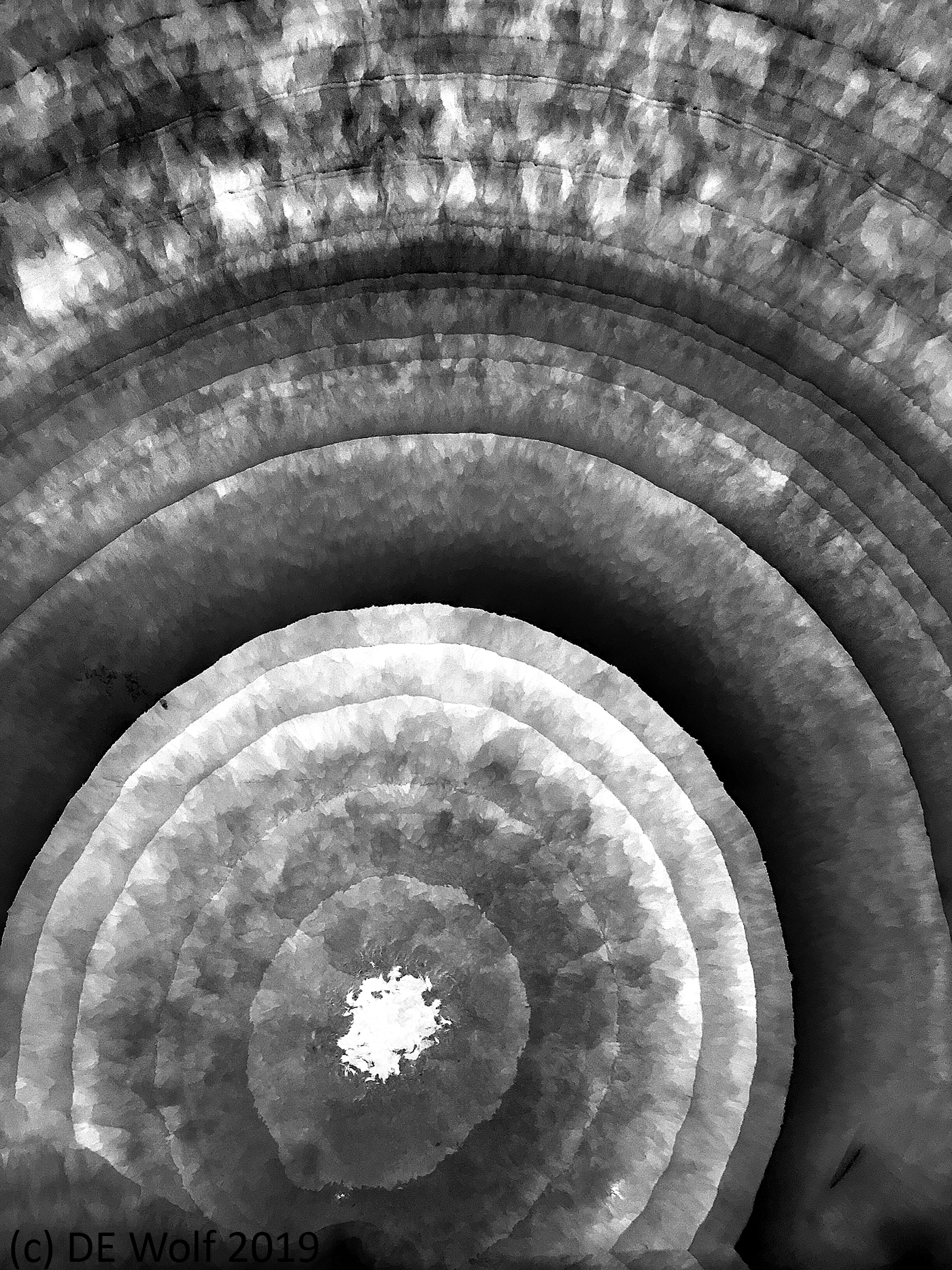In yesterday’s blog, I spoke of the axis mundi, which is the center of the world, or of the universe, and I’d like to offer another glimpse of that center today. It is shown in Figure 1. What you see is a picture of a giant translucent slice of agate in a window at Tiffany’s. I mention this because when I entered the store to photograph it, I was immediately surrounded by concerned clerks. “One Adam Twelve, One Adam Twelve! Crazy photographer on the loose!” I’ll leave to my generation to recognize that.
But I do want to point out the ambiguously bright center of the agate, which like a black hole contains infinite light, as well as how the shades of dark and light in the bands resemble the zeros and ones of binary data storage, because like the Tree Of Knowledge, an example of the world tree that is the axis mundi, is meant to contain all the knowledge in the universe.
Last night I was speaking to a friend about the meaning of the axis mundi and the world tree. As this photograph clearly illustrates, this central axis is everywhere – found here at the mall, but at the same time it is the life-long quest of the Hero with a Thousand Faces. That dichotomy seems a contradiction.
Where is the center of the universe? Logically, the center is the point from which all things emanate – in an expanding universe. Well, suppose that you are on a balloon that is being inflated and there are other people on the balloon. Each person sees everyone else moving away from him/her. And the same is true of our-four dimensional space-time universe. So by that definition the central point is everywhere.
On a mythic level it may be everywhere, but it may not always be attainable or accessible. That is of course true, for instance, for the hero Percival who is first denied access to the grail only to attain it later*. The moral to the story is that the center is indeed everywhere, in the simplest of things you will catch glimpses of it by virtue of the simplicity. It is a simple gift that may be found even in a thinly sliced, translucent layer of cryptocrystalline silica.
* In Chrétien’s Perceval, he encounters a crippled king but he fails to recognize the significance of the grail and therefore does not ask the right question, the question that would have healed the king. He is not ready. From then on he vows to find the true grail. And as in all these hero stories he must first become worthy.

